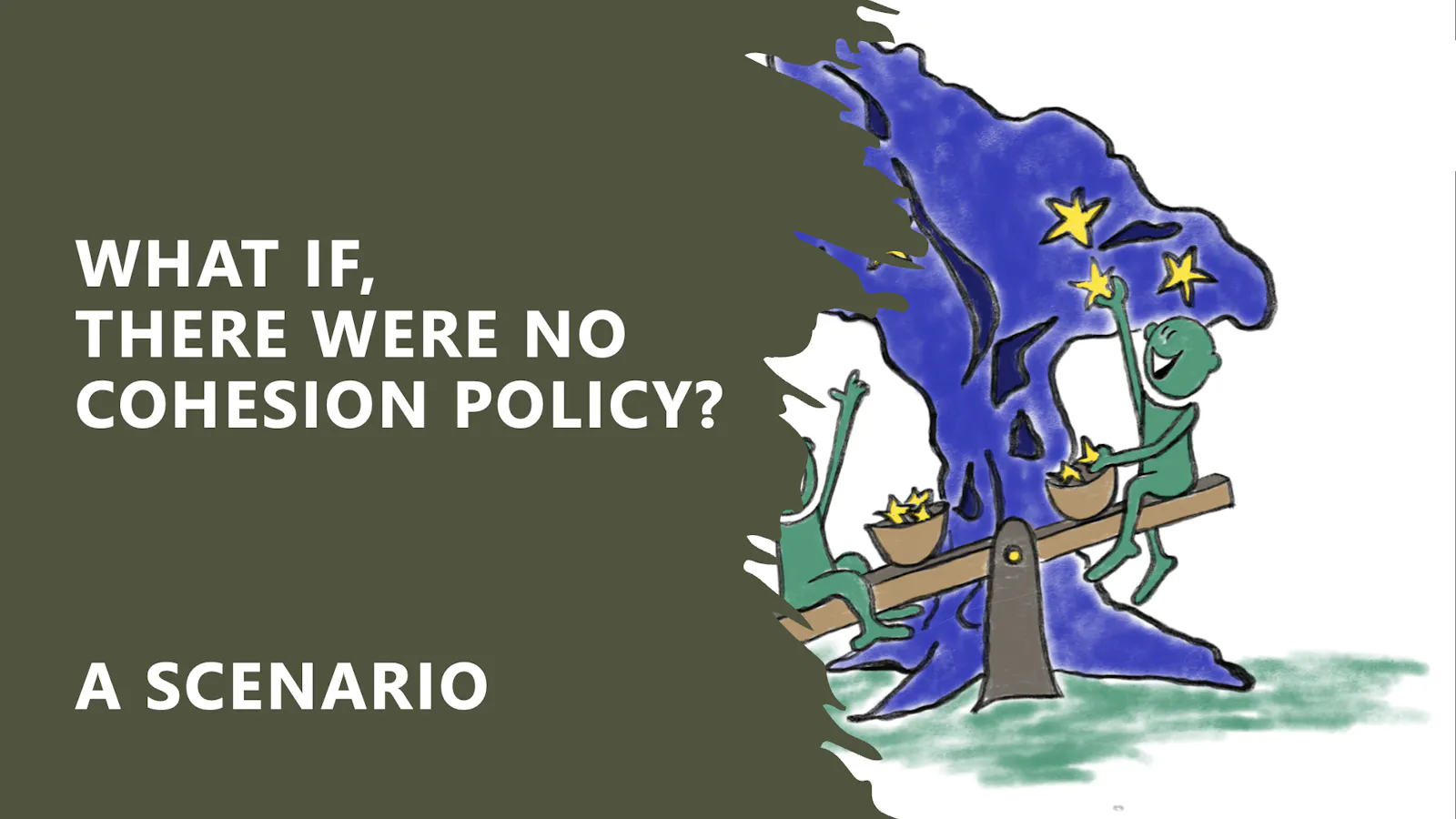What if, there were no cohesion policy? A scenario
September 2023

The European funding landscape has grown increasingly complex and costly in recent years. The core EU funding instruments – such as ERDF, ESF, EAFRD – have got companions in the framework of the recovery package for the EU, including the NextGenerationEU and its Recovery and Resilience Facility, as well as a multitude of new funding possibilities through the REACT-EU, CRII/CRII+, CARE, FAST-CARE.
Each new instrument comes with its own objectives, negotiation and programming procedures, eligibility criteria, delivery and implementation systems, timelines and governance arrangements. In parts these overlap with those of existing programmes. For instance, the types of investment supported by the Recovery and Resilience Facility are rather similar to those of ERDF, albeit the administrative procedures could not be more different. Others of the new instruments are merely ways to channel ERDF money into new avenues, sometimes in combination with other funding streams.
While every new initiative and instrument comes with full good intentions to better respond to emerging challenges in the best possible way, the combined picture is hardly convincing. Indeed, in many parts already the civil servants and experts working with the instruments and funds have difficulties keeping the overview of the various funding instruments and their formal requirements. That the average citizen is lost in the jungle of abbreviations of funding instruments is only understandable. Indeed, despite all simplification efforts, the increasing number of abbreviations and instruments portrays the EU all too well as bureaucratic machinery far away from its citizens´ day-to-day reality. On top if this each new funding instrument comes with the need for civil servants at various level ensuring that it is implemented diligently. Certainly, there also needs to be a pot of money to be distributed for each of the instruments. Traditionally this mainly came from the member states payments to the EU budget. In light of the recent crises, the EU in addition also tapped into other financing sources such as borrowing money.
Maybe it is time for a considerable overhaul to simplify the system, reduce the administrative structures, make it easier to communicate and more understandable for the citizens and ensure its financial viability. This could be done in different ways:
To read this post you'll need to become a member. Members help us fund our work to ensure we can stick around long-term.
See our plans (Abre numa nova janela)
Já é um membro? Iniciar sessão (Abre numa nova janela)


